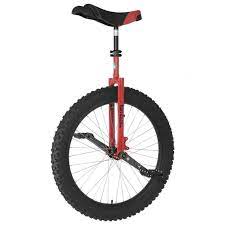
Unicycles have long captivated the imagination of people around the world. With their unique design and challenging nature, these single-wheeled wonders have become a symbol of balance, skill, and sheer determination. In this article, we will explore the fascinating world of unicycles, delving into their history, different types, benefits, and the growing popularity of unicycling as a recreational activity.
A Brief History
Unicycles have a rich history that dates back to the early 19th century. The first recorded unicycle-like device was called the “velocipede,” which featured a single large wheel and pedals attached directly to the wheel. However, it wasn’t until the late 19th century that the modern unicycle as we know it today began to take shape.
In 1866, the first patent for a unicycle was granted to Pierre Lallement, a French inventor. Lallement’s design featured a smaller wheel with a seat positioned above it and pedals attached to a crankshaft. This design laid the foundation for future advancements in unicycle technology.
Over the years, unicycles have evolved to include various improvements in terms of materials, wheel size, and overall design. Today, unicycles are available in a wide range of styles and configurations to suit different riding preferences and skill levels.
Types of Unicycles
There are several types of unicycles available, each designed for specific purposes and riding styles. Here are some of the most common types:
1. Standard Unicycles: These are the most basic type of unicycles and are suitable for beginners. They typically feature a 20-inch wheel and are designed for general-purpose riding on flat surfaces.
2. Mountain Unicycles: Also known as “Muni” unicycles, these are built to handle off-road terrains such as trails, forests, and mountains. They have larger wheels (24 to 29 inches) with knobby tires for better traction and shock-absorbing capabilities.
3. Freestyle Unicycles: Designed for performing tricks and stunts, freestyle unicycles are lightweight and highly maneuverable. They often feature a smaller wheel size (16 to 20 inches) and a flat crown for easier foot placement during tricks.
4. Distance Unicycles: As the name suggests, distance unicycles are built for long-distance riding. They typically have larger wheel sizes (29 to 36 inches) for increased speed and efficiency. These unicycles often come equipped with handlebars for better stability and control during extended rides.
The Benefits of Unicycling
Unicycling offers a range of physical and mental benefits that make it an appealing activity for people of all ages. Here are some of the key benefits:
1. Balance and Coordination: Riding a unicycle requires exceptional balance and coordination. Regular practice can improve these skills, leading to better overall body control and stability.
2. Core Strength: Unicycling engages the core muscles, including the abdominals and lower back, as they are constantly working to maintain balance. This helps strengthen the core and improve posture.
3. Cardiovascular Fitness: Unicycling is a great cardiovascular exercise that gets the heart pumping and increases endurance. It provides an effective way to burn calories and improve overall fitness levels.
4. Mental Focus: Riding a unicycle requires concentration and focus, as riders need to constantly adjust their balance and react to changes in terrain. This helps improve mental agility and enhances cognitive abilities.
The Growing Popularity of Unicycling
In recent years, unicycling has gained significant popularity as a recreational activity and a competitive sport. Unicycle clubs and communities have emerged worldwide, providing a platform for enthusiasts to connect, share knowledge, and participate in organized events.
Unicycle hockey, unicycle basketball, and unicycle trials are just a few examples of the competitive sports that have developed around unicycling. These sports showcase the impressive skills and versatility of unicyclists, attracting both participants and spectators alike.
Furthermore, unicycling has become a popular form of transportation in urban areas. Its compact size and maneuverability make it an ideal choice for short commutes, especially in crowded cities where parking space is limited.
Conclusion
Unicycles continue to captivate riders with their unique design and challenging nature. From their humble beginnings in the 19th century to the diverse range of types available today, unicycles have come a long way. With their numerous physical and mental benefits, as well as the growing popularity of unicycling as a recreational activity and sport, it’s no wonder that more and more people are embracing the world of unicycles. So why not give it a try? Strap on your helmet, hop on a unicycle, and embark on an exciting journey of balance, skill, and endless possibilities.